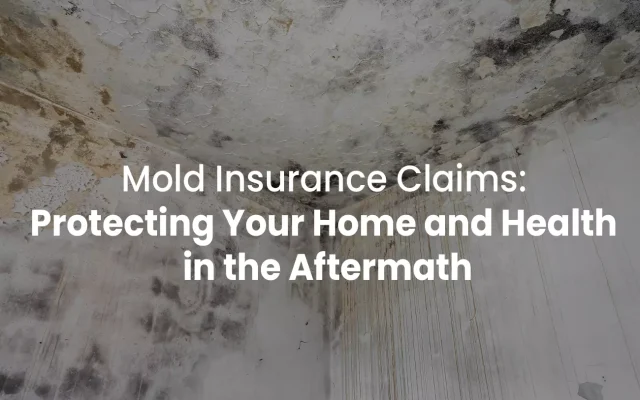
How to File a Mold Insurance Claim
Mold growth can be a frustrating and expensive problem for homeowners. Mold can cause property damage and even health issues if left untreated. If you have discovered mold damage in your home, filing a mold insurance claim can help you cover the costs of repairs and remediation. Continue reading to learn how to handle mold damage and the insurance claims process.
What to Do if You Discover Mold Damage
The first thing you should do if you discover mold damage in your home is take immediate action. Mold can spread quickly and cause further damage, so it’s essential to act fast. Here are some tips to help you get started:
1. Contact an insurance company: If you have homeowners insurance, it’s worth contacting your insurance company to see if your policy covers mold damage. The insurance company can advise you on what steps to take next and what documentation they need to process your claim.
2. Documenting damage: Take photos and videos of the mold damage to provide evidence for your claim. This documentation can also help you track the progress of the remediation process and provide proof of any repairs made.
3. Hiring an experienced attorney: If you have difficulty getting your insurance claim approved, you may need to hire an experienced attorney. An attorney can help make the process easier and also help you negotiate with your insurance company to ensure you receive fair compensation.
Will My Insurance Policy Cover Mold Damage?
Whether or not your insurance policy covers mold damage depends on the type of policy you have and the cause of the mold growth. Most standard homeowners insurance policies do not cover mold damage caused by flooding, neglect, or poor maintenance. However, if the mold growth was caused by a covered peril, like a burst pipe or storm damage, your insurance policy may cover the damage.
It’s essential to read your insurance policy carefully to understand what is covered and what isn’t. If you’re unsure, contact your insurance agent or the insurance company’s customer service department to get clarification.
When Won’t My Insurance Policy Cover Mold Damage?
There are several situations in which your insurance policy may not cover mold damage. Here are some examples:
1. Neglect or poor maintenance: You may not receive coverage if the mold growth was caused by neglect or poor maintenance, such as a leaky roof or plumbing issue.
2. Flooding: Most homeowners insurance policies do not cover mold damage caused by flooding. If you live in an area prone to flooding, you may need to purchase a separate flood insurance policy to cover mold damage.
3. Gradual damage: You may not receive coverage if the mold growth was caused by gradual damage, such as humidity or a slow leak.
What to Know When Working With Contractors and Adjusters
You may need to work with contractors and adjusters to complete the remediation and repair process when filing a mold insurance claim. Remember to keep these things in mind:
1. Choose reputable contractors: It’s essential to work with reputable contractors who have experience in mold remediation. Do your research and get recommendations from friends and family before hiring a contractor.
2. Understand the remediation process: Make sure you understand the remediation process and the steps the contractor will take to remove the mold. Ask questions and get a detailed estimate before starting the work.
3. Communicate with your adjuster: Stay in touch with your insurance adjuster throughout the remediation process. They may need to visit your home to assess the damage and verify the repairs.
How to File a Successful Mold Insurance Claim
Filing a successful mold damage claim requires careful preparation and documentation. Remember the below tips when filing a successful claim:
1. Act quickly: Take immediate action when you discover mold damage in your home. Mold can spread quickly, so it’s essential to act fast to prevent any more damage.
2. Contact your insurance company: Contact your insurance company as soon as possible to report the mold damage. Your insurance provider will help you begin the next steps in the process, this way you’re not left to handle the aftermath on your own.
1. Document the damage: Take photos and videos of the mold damage to provide evidence for your claim. Keep detailed records of any repairs or remediation work.
2. Review your policy: Review your insurance policy carefully to understand what is covered and what isn’t. If you’re unsure, contact your insurance agent or the insurance company’s customer service department to get clarification.
3. Be patient: Filing a mold damage claim can be a lengthy process. Be patient and stay in touch with your insurance adjuster throughout the process.
Hiring Experienced Attorneys For Your Mold Insurance Claim
Handling the aftermath of flood damage can be a frustrating and stressful process. Mold damage can costly and even hazardous, so it’s important to act as soon as possible to mitigate these damages. Filing a successful claim is essential to you receiving the proper coverage and compensation. If you find yourself dealing with mold damage or a complicated claims process, contact our team at Krapf Legal today. We’re experienced attorneys who can help your specific needs and make sure you’re properly represented throughout the insurance claim process. Contact us today so we can make the process easier for you.


